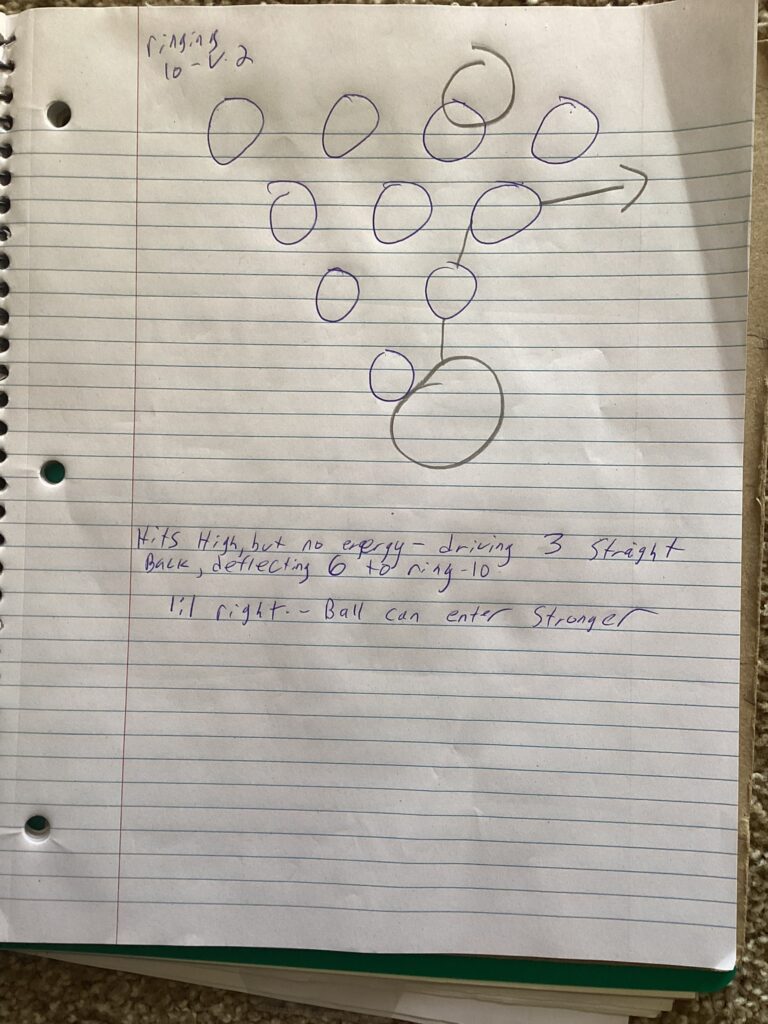Your cart is currently empty!
Bowling Tip: How to Fix Ringing and Flat 10 Pin Leaves for More Strikes
Today, I want to tackle one of the most common frustrations bowlers face: the dreaded 10 pin leaves. If you’re a bowler, you’ve probably experienced the disappointment of hitting the pocket, only to watch that 10 pin stubbornly stay standing. But did you know there are specific reasons behind these 10 pin leaves? Today, we’ll dive into the four types of 10 pin leaves—two versions of ringing 10s and two versions of flat 10s—and strategies to adjust for each scenario to get you more strikes in bowling.
There are a couple of posts I have written previously that may help understand some terminology in this post, and also, what to watch for when throwing your shot.
This one is about what to watch for, and how: Enhanced Focus Targeting: A Breathing and Accuracy System for Bowling
This one is lane play terminology: Understanding Lane Play: Targeting, Moves, and Adjustments
Understanding 10 Pin Leaves: Ringing vs. Flat 10 Pins
Before we get into the solutions, let’s clarify what each type of 10 pin leave means.
- Ringing 10 Pin: The ringing 10 pin occurs when the ball enters the pocket with significant energy and a high entry angle, causing the 3 pin to clip the 6 pin on the left side. This results in the 6 pin flying around the 10 pin rather than taking it down.
- Flat 10 Pin: On the other hand, the flat 10 pin happens when the ball enters the pocket with either too little energy or too high of an entry angle, causing it to deflect. The 3 pin hits the 6 pin head-on, which pushes it left of the 10 pin, leaving it standing.
Each version of these leaves has its unique cause, and once we understand them, we can discuss targeted adjustments.
Ringing 10 Pin: Version 1
In the first scenario, the ball enters the pocket high with a lot of energy, exiting the pin deck around the 8 pin. This powerful entry causes the 3 pin to travel directly back, clipping the 6 pin sharply on its side, which makes it shoot around and in front of the 10 pin instead of knocking it down.
Fix: To counter this type of ringing 10 pin, try moving left. A small adjustment, like a diagonal 2:1 or just one board left with your feet, will help the ball travel slightly longer in the oil, reducing its angle and dissipating some energy. This smoother entry angle prevents the ball from driving too sharply into the pocket, improving your chances of converting the 10 pin and getting more strikes in bowling.

Ringing 10 Pin: Version 2
In this version, the ball still hits high in the pocket but with slightly less energy, exiting near the 9 pin or slightly right of it (but not far enough to hit the 10 pin). This causes the 3 pin to travel straight back, which clips the side of the 6 pin, ringing it in front of the 10 pin without enough angle to knock it down.
Fix: To correct this, consider moving right by one board or a parallel right 1:1 adjustment. This move allows the ball to enter with a slightly stronger angle, resulting in the 3 pin hitting more of the 6 pin’s 7:00 side rather than 8:30 or 9:00. By adding a touch of angle, you can help the 6 pin carry through to take out the 10 and get more strikes in bowling.

Flat 10 Pin: Version 1
Now, let’s discuss flat 10 pin leaves. In the first version, the ball hits the pocket too weakly and deflects to the right of the 9 pin, resulting in the 3 pin lightly contacting the front of the 6 pin. This causes the 6 pin to be pushed left of the 10 pin rather than knocking it down.
Fix: The best adjustment for this type of flat 10 pin is to move right. A one-board move with your feet, or a diagonal 2:1 adjustment can increase the ball’s energy at the pocket, helping it deflect less and hit the 3 pin more squarely. This shift can give the ball just enough power to drive through the pocket and help the 6 pin hit the 10.

Flat 10 Pin: Version 2
In the second version of the flat 10, the ball hits the pocket late and exits the pin deck around the 8 pin. This causes the 3 pin to deflect slightly and hit the 6 pin head-on, which pushes it left of the 10 pin. Here, the ball enters the pocket too late and with excessive energy, often causing the 3 pin to ring around the 10 and drop in the gutter.
Fix: Moving left by a board or a parallel 1:1 adjustment can smooth out the ball’s entry, allowing it to read the lane slightly earlier. This adjustment helps reduce the ball’s energy just enough to avoid excessive deflection while giving you a better entry angle and increases your chance of carrying the 10 pin.

For a bit more info on adjustments and lane-play the USBC has a page dedicated to more basic moves.
Final Thoughts
Understanding the mechanics of 10 pin leaves—and the differences between ringing and flat 10s—can empower you to make targeted adjustments that help you get more strikes in bowling. With these insights, you’ll have a stronger foundation for reading lane conditions, and tuning your game. Try these adjustments next time you encounter a 10 pin, and watch your strike percentage increase!
